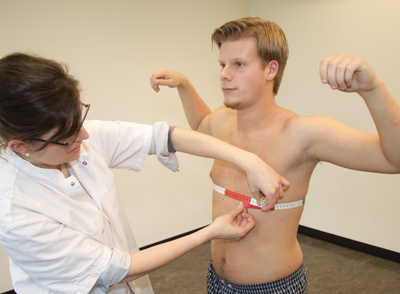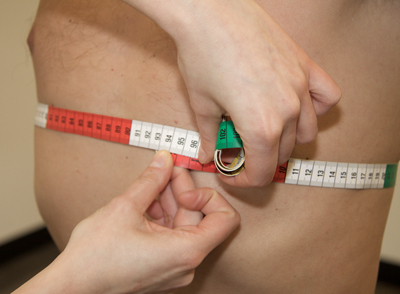Test for Range of Motion of Costovertebral Joints
This test is indicated when ankylosing spondylitis (Bechterew’s disease) is suspected, based on the following:
- Pain in, or near, the superior posterior iliac spines and/or the sacro-iliac joints.
- A suspicion based on the history-taking (particularly stiffness in the lower lumbar region that persists for more than 1/2 hour).
Procedure
- The patient stands upright.
- The examiner circumvents the thorax by means of a measuring tape, ventrally and dorsally at the same level.
- In men, the xiphoid process forms the reference points, in women (due to presence of breasts), it is the middle of the sternum [Figure 56].
- Ask the patient to breath in deeply, then to first exhale to a maximum and subsequently inhale to a maximum, then hold their breath.
- Follow these latter two movements by tightening and slackening the measuring tape, respectively.
- Measure, to the nearest half a centimetre, the difference between the maximum inhalation and exhalation [Figure 57].
 Figure 56
Figure 56
 Figure 57
Figure 57
Interpretation
A value of less than 5 cm can be an early sign of Bechterew’s disease (pulmonary abnormalities such as emphysema should be excluded first).




























